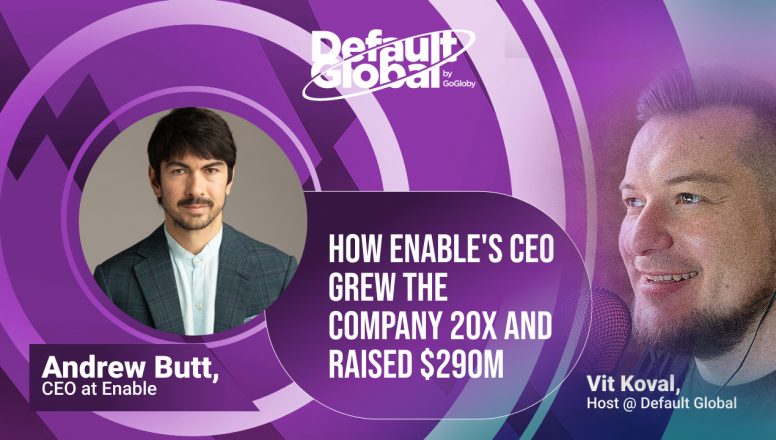Meet Brian Noyle, Startup tech leader:
Brian Noyle, Startup Tech Leader, embarked on an unconventional journey into tech. With degrees in botany, he transitioned to engineering through software during his graduate studies.
Brian’s career began with proprietary platforms and languages, later transitioning into more standard engineering roles. He spent 15 years as a consultant, tackling a variety of problems swiftly.
Family life prompted a shift to product-based engineering and leadership, enabling him to stay in one place. Brian’s unique path has given him diverse problem-solving insights, and he’ll share his perspectives on global hiring, remote work, employment compliance, and more in our Default Global podcast.
Listen Up: Brian Noyle, Startup tech leader — Full Podcast Episode on Spotify
Watch Now: Vit’s In-Depth Talk with Brian Noyle
Learn How Globy Helped Bonusly Save $1.3M on Engineering Expansion
Case StudyQuick Read: Brian Noyle, Startup tech leader, Interview Highlights
Career Path & Transitioning Roles
In my recent podcast episode, I had the pleasure of talking to Brian Noyle, a startup tech leader. Brian’s career in tech is an interesting one as he started from a non-traditional path.
“I’m actually not classically trained as an engineer,” he shared.
His journey from a consultant to a product-based engineer and finally to leadership was shaped by the myriad of problems he was exposed to.
“The learning process of going from being a consultant and solving a problem for a year or two into product-based work where all the problems I solve or create, I’m sort of biting off and owning… changes the way you think a little bit when you’re doing engineering and team building.”
Aligning Tech Teams for Company Growth
Brian emphasized the importance of aligning tech teams to the business needs, especially for startups.
“We build, you know, we build an HRIS system or we build a mapping system or whatever it is that we do in our industry,”he pointed out.
“It’s how fast can you get features to market and in front of customers to establish some sort of feedback loop that will grow your product and your business.”
He argued that technology isn’t what makes a business money, but rather the speed at which a business can deliver features to its customers.
Expanding to Latin America
When it came to expanding the team globally, Brian shared that the decision was motivated by both financial and diversity considerations. He stressed the importance of adhering to their company values of diversity and inclusion, which meant tapping into the talent pool outside of the United States.
He conceded, “Talent is equally distributed around the globe, or nearly so, then why am I only focusing in the United States when I’m recruiting that talent, when there are good engineers everywhere there’s an internet connection?”
Overcoming Initial Worries
The decision to go global wasn’t without its challenges. There were concerns about potential legal exposure, ensuring equitable pay, and how to abide by local regulations. Brian found partnering with a global hiring service such as GoGloby a practical solution.
“That just removes an entire suite of problems from the table right out of the gate,” he said.
Global Hiring Process
As for the hiring process differences between the US and Latin America, Brian noted that it was more abbreviated in Latin America due to the competitive market. He advised companies to plan out their hiring process, make it objective and repeatable, and to be decisive.
Integrating New Team Members
On the topic of integrating new team members, Brian shared that they opted to integrate their Latin American engineers directly into their existing US teams. This helped avoid the challenges of managing different teams with different cultures and working styles.
Advice for Tech Leaders & Global Tech Talent
Finally, Brian offered advice for tech leaders considering global hiring. He encouraged them to look past the complexity of the word “global” and to find a reputable partner to help them in the process. For global tech talent, he advised them to find a reputable partner and to look for an organization that aligns with their values. “Step forward and make yourself an integrated and indispensable part of the team,” he said.
Brian’s insights into leading tech teams, global hiring, and integrating new team members provide a valuable perspective for other tech leaders facing similar challenges. His experience demonstrates that with careful planning, clear communication, and commitment to diversity, companies can successfully expand their teams globally.






